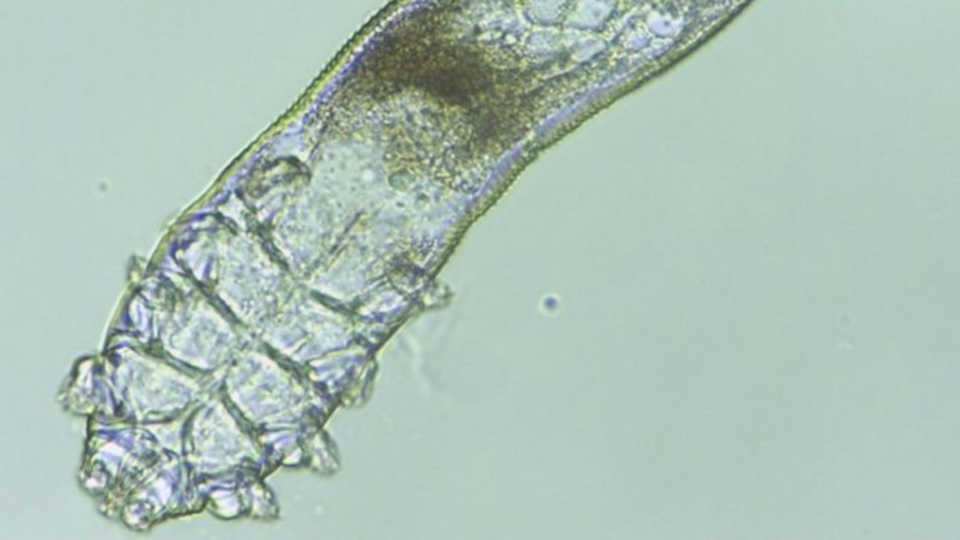Science News
Face Mites

It should come as no surprise that we have micobes living on and in us—bacteria, fungi, viruses, and more. But did you know that arachnids are a part of our ecosystem? According to a new study, we all have at least two species of mites living on our faces and other parts of our bodies.
Aren’t they cute?
It’s no surprise to scientists that the mites make their home on us. Studies of cadavers showed that these mites were very common on humans, but studies of living people only demonstrated that 10-25% of us house these arachnids (yes, mites are related to spiders and ticks). But scientists—including the Academy’s Michelle Trautwein and her colleagues—figured that we all have them.
Previous sampling of live people wasn’t providing the full picture, apparently. A piece of tape on the skin, a plucked eyebrow hair or eyelash, even a spatula scraped around the nose were lucky to uncover a mite or two under the microscope, Trautwein explains. Often, those techniques revealed nothing. Then the scientists tried a slightly more invasive method—superglue on a slide pressed to the face for 30 seconds. Pull it off and the researchers hit “the motherload,” she says, “Sometimes 20-40 mites per slide! It was exciting times.”
Now the scientists have permission to use this method on the public, too! It’s perfectly safe, and in fact, dermatologists use superglue on human skin frequently. But it was actually through molecular methods that the team discovered mite DNA on every adult sampled. The more the scientists sampled people, the more evident it became that every single one of us carries these mites—two species for certain, but perhaps even more.
The two species living on your face right now are Demodex folliculorum and Demodex brevis, and they both live off sebum produced by glands in our skin, but their similarities end there. D. folliculorum is long and skinny and lives on the surface of your skin. D. brevis is short and fat and lives in your pores. Remarkably, they’re not even closely related.
So, where did they come from? How long have we had them on our visages? How do they affect our health or complexion? “We don’t know,” Trautwein says, which is always an answer scientists love, because it means more digging, more research into these arachnids to learn more, and Trautwein is happy to oblige.
“Since they’re distantly related, they must’ve diverged many hundreds of thousands of years ago,” she says. “They have different evolutionary histories. We didn’t get them from the same place.” D. folliculorum may have been with us for a very long time, before we split from apes—so testing apes for mites is a next step. D. brevisis more closely related to dog mites than other human mites, so perhaps we got that one from a domesticated animal—dogs or even goats, Trautwein explains. Testing other mammals, including dometicated ones, will help shed light on these questions, and the Academy collections could be a great resource, she says.
Should we be concerned about these mites? I mean, they live on our faces! “Since we all have them, they must be largely benign,” Trautwein says. “But researchers have found that the mites can be associated withrosacea (a skin condition) and blepharitis (an eye condition). Similarly in dogs, mites can cause mange.” But overall, they are likely harmless. “I would be more alarmed if you don’t have mites,” she says. She was relieved to find them on her skin.
The study was published last month in PLoS ONE.
Images: Meet Your Mites